There are two methods that may be used to deal with surface contamination:
- The barrier method
- Cleaning (Precleaning) & disinfection
- The barrier method: The barrier method entails using fluid resistant materials to prevent a surface from becoming contaminated. Regulation states that a surface barrier must be placed onto a surface that is difficult to clean and disinfect.
- Surfaces that may be protected with barriers include:
- Dental Chair Headrest & control buttons
- Light handles & switches
- Evacuator hoses & controls
- X-ray controls & switches
- Air-water syringe handles
- Patient mirror handles
- Drawer handles
- Adjustment handles on operator and assistant chairs and tools
- Bracket table
- Computer keyboards
- Requirements when using barriers:
- After dental procedures, surface barriers must be carefully removed so the surface under the barrier does not become contaminated (while removing the barrier).
- If the barrier moved or was torn during dental procedures and the surface became contaminated the surface must be properly cleaned and disinfected.
- Surfaces that may be protected with barriers include:
- Precleaning & Disinfection: The DBC’s Minimum Standards for Infection Control and the OSHA BBP Standard require that contaminated work surfaces be cleaned (precleaned) and disinfected between each patient.
- Cleaning (Precleaning) is the removal of blood, saliva, and other body fluids to prepare for disinfection. Contaminated surfaces must be cleaned/precleaned in order to be effectively disinfected.
- Disinfection kills disease-causing bacteria that remain on surfaces following cleaning/precleaning when correct procedures and guidelines are followed. These guidelines are listed on the following area. Please note: Disinfecting does not kill spores.
- Disinfection Procedures & Guidelines
- Appropriate PPE must be worn during disinfecting procedures, either method:
- Heavy-duty utility gloves (HDUG) (Exam gloves may not be used for disinfecting unless worn with HDUG)
- Gowns
- Masks
- Protective Eyewear
- Appropriate PPE must be worn during disinfecting procedures, either method:
- Products used to preclean/clean items or surfaces prior to disinfection procedures shall be clearly labeled and DHCP shall follow all safety data sheet (SDS) handling and storage instructions.
- Clean all housekeeping surfaces (e.g. floors, walls, sinks) with a detergent and water or a Cal/EPA registered, low-level grade disinfectant.
- Preclean/clean and disinfect all clinical contact surfaces that are not protected by impervious barriers using a California Environmental Protection Agency (Cal/EPA) registered, hospital grade intermediate-level germicide after each patient.
- Select and use proper category of disinfectant
- Low-level
- This is the least effective disinfection process.
- It kills some bacteria, some viruses and fungi
- Does not kill bacterial spores or mycobacterium tuberculosis var bovis.
- The low-level disinfectants used shall be labeled effective against HBV and HIV. Use disinfectants in accordance with the manufacturer’s instructions.
- Intermediate-level Hospital grade (Tuberculocidal)
- Kills many human pathogens (HIV, HBV, HCV), including mycobacterium tuberculosis var bovis
- This process does not necessarily kill all spores
- Used mainly for contaminated clinical surfaces and items and laboratory areas
- An intermediate-level disinfectant is required to be used in all clinical, laboratory and instrument processing areas of a DHS
- High-level
- Kills some, but not necessarily all bacterial spores.
- This process kills mycobacterium tuberculosis var bovis, bacteria, fungi, and viruses.
- This is the process that the DBC’s Minimum Standards for Infection Control requires if critical or semi-critical instruments are heat sensitive and need to be sterilized. An example of this type of product is Glutaraldehyde.
- Low-level
- Disinfection Procedures & Guidelines
Simply put:
- Don the proper PPE
- Remove all garbage, sharps, etc.
- If using a barrier, remove barrier carefully so as to not touch the clean surface underneath. If barriers are removed and are not contaminated underneath, there is no need to clean and disinfect the surface.
Otherwise:
- Use the “spray-wipe-spray-wait” or “wipe-discard-wipe-wait” method to preclean and disinfect the surface:
- First step: Clean/preclean the surface.
- Spray-wipe spray technique: Spray the surface with the proper cleaning solution, and wipe clean by using a scrubbing motion. Be certain to scrub the surface area thoroughly to remove all bioburden prior to disinfecting. Use as many paper towels and spray as needed for the surfaces to become clean and disinfected.
- Wipe-discard-wipe-wait technique: Using towelettes, as many as needed, scrub the surface with the first (set) of towelettes to clean. Discard.
- Second step: Apply disinfecting solution.
- Spray-wipe spray technique: Reapply (spray) the disinfecting solution on to the cleaned surfaces. Be certain to read the manufacturer’s instructions for use (IFU) to allow the disinfecting solution to remain wet or visibly moist on the cleaned surfaces for the correct “kill” or “contact” time prior to setting up for the next patient.
- Wipe-discard-wipe-wait technique: Reapply the disinfecting solution on to the cleaned surfaces with new towelettes, using as many towelettes as needed. Be certain to read the manufacturer’s instructions for use (IFU) to allow the disinfecting solution to remain wet or visibly moist on the cleaned surfaces for the correct “kill” or “contact” time prior to setting up for the next patient.
- First step: Clean/preclean the surface.
